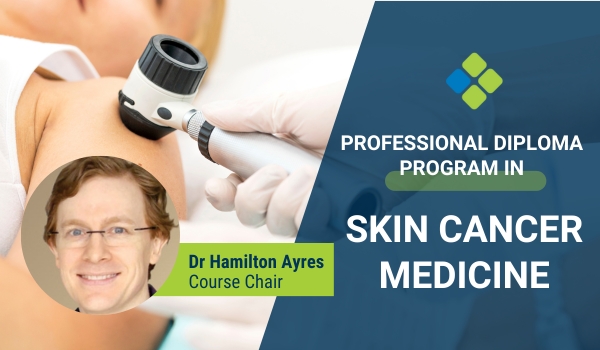How to treat common cutaneous fungal infections
Delve into the basics of common cutaneous fungal infections and understand their presentation and treatment approaches within a primary care setting.
.jpg)
HealthCert Education
Among the various skin conditions encountered in primary care, cutaneous fungal infections are some of the most common. Understanding their presentation and treatment is crucial in providing comprehensive care.
For further information on this topic, you may be interested to learn more about the HealthCert Professional Diploma program in General Dermatology.
In this article, we will delve into the basics of common cutaneous fungal infections and the appropriate approaches for treatment within a primary care setting.
Understanding common cutaneous fungal infections
Fungi are ubiquitous microorganisms that thrive in warm, moist environments. When they infect the skin, they cause a variety of cutaneous fungal infections, often presenting with distinct clinical features. The most frequent types encountered in primary care include:
Tinea Corporis (Ringworm)
This infection manifests as a red, scaly, circular rash with a clearer center, resembling a ring. It commonly affects the body, arms, and legs, but not the scalp, nails, or groin (these regions have their unique names, such as tinea capitis or tinea cruris).
Tinea Pedis (Athlete's Foot)
Affecting the feet, particularly between the toes, tinea pedis causes itching, burning, and scaling. It can also spread to the toenails (onychomycosis) if left untreated.
Tinea Cruris (Jock Itch)
Predominantly found in the groin area, tinea cruris results in a red, itchy rash with raised edges.
Candidiasis (Yeast Infections)
Caused by the yeast Candida, this infection typically occurs in skin folds and moist areas, presenting as red, itchy patches with satellite lesions.
Tinea Versicolor
This condition is characterised by multiple small, scaly, discolored patches on the trunk and occasionally on the arms and neck. It is more noticeable in individuals with darker skin tones.
Intertrigo
Not strictly a fungal infection, but rather a skin inflammation that often occurs in skin folds, such as the armpits, groin, and under the breasts. It may be complicated by secondary fungal infections due to the warm, moist conditions.
Treatment options in a primary care setting
Accurate diagnosis
Properly diagnosing a cutaneous fungal infection is crucial. Often, a clinical examination is sufficient for identification. If uncertain, consider performing a potassium hydroxide (KOH) test, where skin scrapings are examined under a microscope for fungal elements.
Topical antifungals
First-line treatment for most mild to moderate cutaneous fungal infections involves topical antifungal agents. Common options include Clotrimazole, Miconazole, Terbinafine, and Ketoconazole. Instruct patients to apply the cream or ointment to the affected area twice daily for 2 to 4 weeks or as directed.
Keeping the skin dry
Emphasise the importance of keeping the affected area dry and clean to inhibit fungal growth. Advise patients to wear breathable clothing and change socks frequently.
Oral antifungals
For more extensive or severe infections, oral antifungal medications may be necessary. Options like fluconazole or Terbinafine can be prescribed for a specified duration, depending on the infection's severity and location.
Education and prevention
Educate patients about proper hygiene, avoiding sharing personal items, and wearing flip-flops in communal areas to prevent reinfection or spread to others.
The Bottom Line
By incorporating general dermatology skills into their practice, GPs can enhance patient care and offer comprehensive services to those in need.
Understanding the presentation and treatment of common cutaneous fungal infections is essential for a primary care physician. Armed with this knowledge, they can confidently diagnose and manage these infections, ensuring an effective and timely care for their patient’s skin concerns.
– Dr Rosmy De Barros
For further information on this topic, you may be interested to learn more about the HealthCert Professional Diploma program in General Dermatology.
Read another article like this one: How to manage pruritus
References:
1. Leung AK, Lam JM, Leong KF, Hon KL. Tinea corporis: an updated review. Drugs Context. 2020 Jul 20;9 :2020-5-6. doi: 10.7573/dic.2020-5-6. PMID: 32742295; PMCID: PMC7375854.
2. Ward H, Parkes N, Smith C, Kluzek S, Pearson R. Consensus for the Treatment of Tinea Pedis: A Systematic Review of Randomised Controlled Trials. J Fungi (Basel). 2022 Mar 29;8(4):351. doi: 10.3390/jof8040351. PMID: 35448582; PMCID: PMC9027577.
3. Pippin MM, Madden ML, Das M. Tinea Cruris. [Updated 2023 May 29]. In: StatPearls [Internet]. Treasure Island (FL): StatPearls Publishing; 2023 Jan-. Available from: https://www.ncbi.nlm.nih.gov/books/NBK554602/
4. R AN, Rafiq NB. Candidiasis. [Updated 2023 May 29]. In: StatPearls [Internet]. Treasure Island (FL): StatPearls Publishing; 2023 Jan-. Available from: https://www.ncbi.nlm.nih.gov/books/NBK560624/
5. Leung AK, Barankin B, Lam JM, Leong KF, Hon KL. Tinea versicolor: an updated review. Drugs Context. 2022 Nov 14;11:2022-9-2. doi: 10.7573/dic.2022-9-2. PMID: 36452877; PMCID: PMC9677953.
6. Nobles T, Miller RA. Intertrigo. In: StatPearls. Treasure Island (FL): StatPearls Publishing; September 19, 2022.

 1800 867 1390
1800 867 1390
.jpg)
.jpg)



